This quick and easy garlic green beans recipe will make you relish green beans again and again. Perfect for making a healthy side dish that your family will love. And you can also add these sautéed green beans into your holiday meal plan.
How do you cook fresh green beans? How do you incorporate green beans into your diet?
Most of the time, I cut green beans into pieces about an inch long and add them to vegetable biryani rice or Indian-style mixed vegetables with other vegetables.
More recently I started making sautéed green beans with garlic, olive oil, and some onion. It makes a perfect side dish and turns any main dish into a wholesome meal.
Green beans are a nutritious vegetable that can be prepared in many different ways. However, some cooking methods are healthier than others. When choosing how to cook green beans, the goal is to retain as much of their nutritional content as possible while avoiding unhealthy additions. Here is an overview of the healthiest ways to enjoy green beans.
Why Green Beans Are Healthy
Before getting into preparation methods, let’s review why green beans are good for you in the first place. Some key nutrients and health benefits include
-
High in vitamin C – An antioxidant that supports immune function and wound healing Just one cup of cooked green beans contains about 14% of the RDA of vitamin C
-
Good source of vitamin K – Important for blood clotting and bone health. Green beans provide over 50% of the RDA per cup.
-
Rich in fiber – 4 grams per cooked cup. Fiber aids digestion and heart health.
-
Packed with antioxidants – Green beans contain carotenoids like beta carotene, lutein and zeaxanthin which protect cells from damage.
-
May help lower cholesterol – The fiber and antioxidants in green beans can reduce LDL “bad” cholesterol levels.
-
Anti-inflammatory effects – Compounds in green beans may help reduce inflammation linked to chronic diseases.
The Healthiest Cooking Methods
To maximize the nutritional benefits of green beans, the cooking method matters. Here are some of the top healthy cooking techniques:
Steaming
Steaming is one of the best cooking methods for preserving nutrients in vegetables. The food cooks quickly with hot steam rather than being submerged in boiling water. This helps retain more of the water-soluble vitamins like vitamins C and B complex.
Sautéing
Cooking green beans in a pan with a small amount of healthy fat like olive oil preserves the bean’s bright green color and crunchiness. Sautéing also brings out the naturally sweet flavor of green beans.
Roasting
Roasting green beans in the oven caramelizes their sugars bringing out a delicious, sweet flavor. Just a light coating of oil is needed to roast them. Plus, roasting maintains more nutrients compared to boiling.
Stir-frying
Cooking green beans in a wok or pan over high heat brings out their snap, brightness, and flavor. The constant movement also exposes more surface area to heat for quick, even cooking. Use heart-healthy oils for stir-frying.
Grilling
Grilling green beans infuses them with a delicious smoky flavor. The high heat helps maintain their crunchiness. Spread beans in a grill basket or on skewers to easily flip them without losing any in the grates.
Tips for the Healthiest Green Beans
Follow these tips to maximize the nutrition and flavor when cooking green beans:
-
Cook just until tender-crisp – Overcooking leads to more nutrient loss.
-
Use healthy oils like olive or avocado oil.
-
Season with fresh herbs, garlic, lemon, spices instead of salts.
-
If boiling, use low sodium broths or cook in just a small amount of water.
-
For casseroles, use Greek yogurt or low-fat milk instead of heavy cream.
-
If roasting or grilling, coat lightly with oil using a brush or sprayer.
-
If reheating leftovers, use the microwave or steamer to preserve nutrients.
Unhealthy Preparation Methods to Avoid
On the other hand, some traditional cooking methods are less healthy:
-
Boiling in water – While boiling is quick, much of the water-soluble vitamins leach out into the cooking liquid.
-
Creamy sauces – Typical cream-based sauces and casseroles add a lot of saturated fat and calories.
-
Deep-frying – Frying in copious amounts of oil adds excess calories and harmful trans fats.
-
Canning – The high heat of canning destroys heat-sensitive vitamins like vitamin C.
-
Buttering – Adding butter not only increases calories but masks the natural flavor.
-
Overcooking – Cooking green beans too long causes them to become mushy and lose nutrients.
Healthy Green Bean Recipes
Here are some delicious and nutritious green bean recipes to try:
- Sautéed green beans with garlic, olive oil, and Parmesan
- Green beans amandine – sautéed with almonds and lemon
- Roasted green beans with mustard, thyme, and pepper
- Green bean salad with vinaigrette and crumbled feta
- Green beans with shallots, herbs, and breadcrumbs
- Thai-style green bean stir fry with ginger and chili sauce
- Grilled green beans with balsamic glaze
- Steamed green beans topped with sesame seeds
Green beans are most nutritious when cooked using methods like steaming, sautéing, roasting, grilling or stir-frying. These techniques help retain vitamins, minerals, fiber and antioxidants better than boiling. Season green beans with fresh herbs, spices, citrus, shallots or healthy oils instead of butter, salt or creamy sauces. Avoid overcooking green beans past the tender-crisp stage. With healthy preparations, green beans make for a tasty and nutritious addition to any meal.

What you will need?
- Whole fresh green beans should be used for this recipe. Just trim the ends.
- Garlic – chop or mince it finely
- Onion – dice into small pieces
- You can use any other cooking oil you want instead of olive oil.
- Leave out the red chili flakes if you don’t want your beans to be spicy.
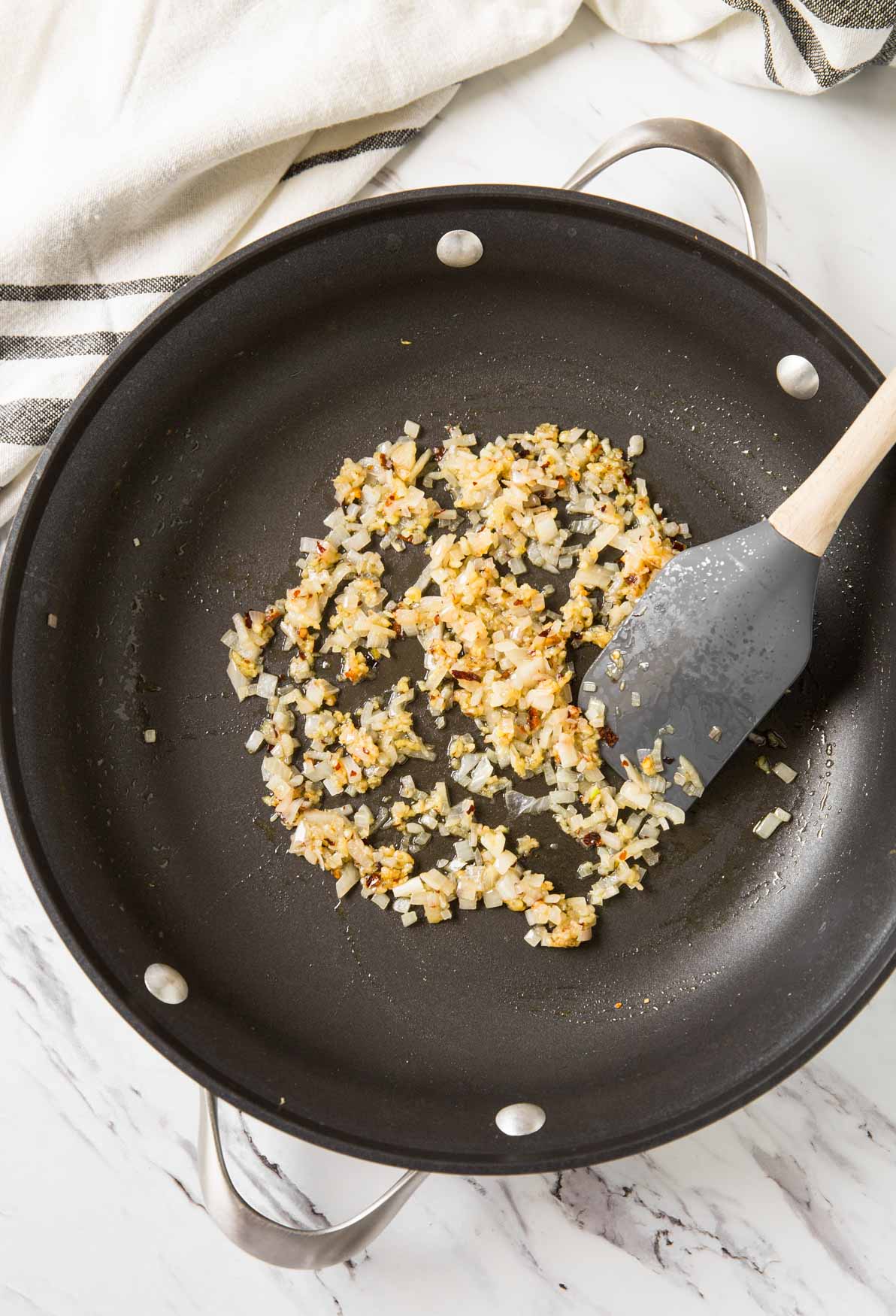
How to make healthy garlic green beans
Steam or boil green beans until tender or as per your likings. In a large skillet cook freshly chopped garlic with chili flakes in some olive oil. Then add chopped onion and sauté for a minute. Now add in cooked green beans and season with salt and pepper. Mix well and turn off the heat.
For extra flavors consider adding some grated parmesan cheese. I use it sometimes.
That’s it! A super simple and quick side is ready to visit the dining table.
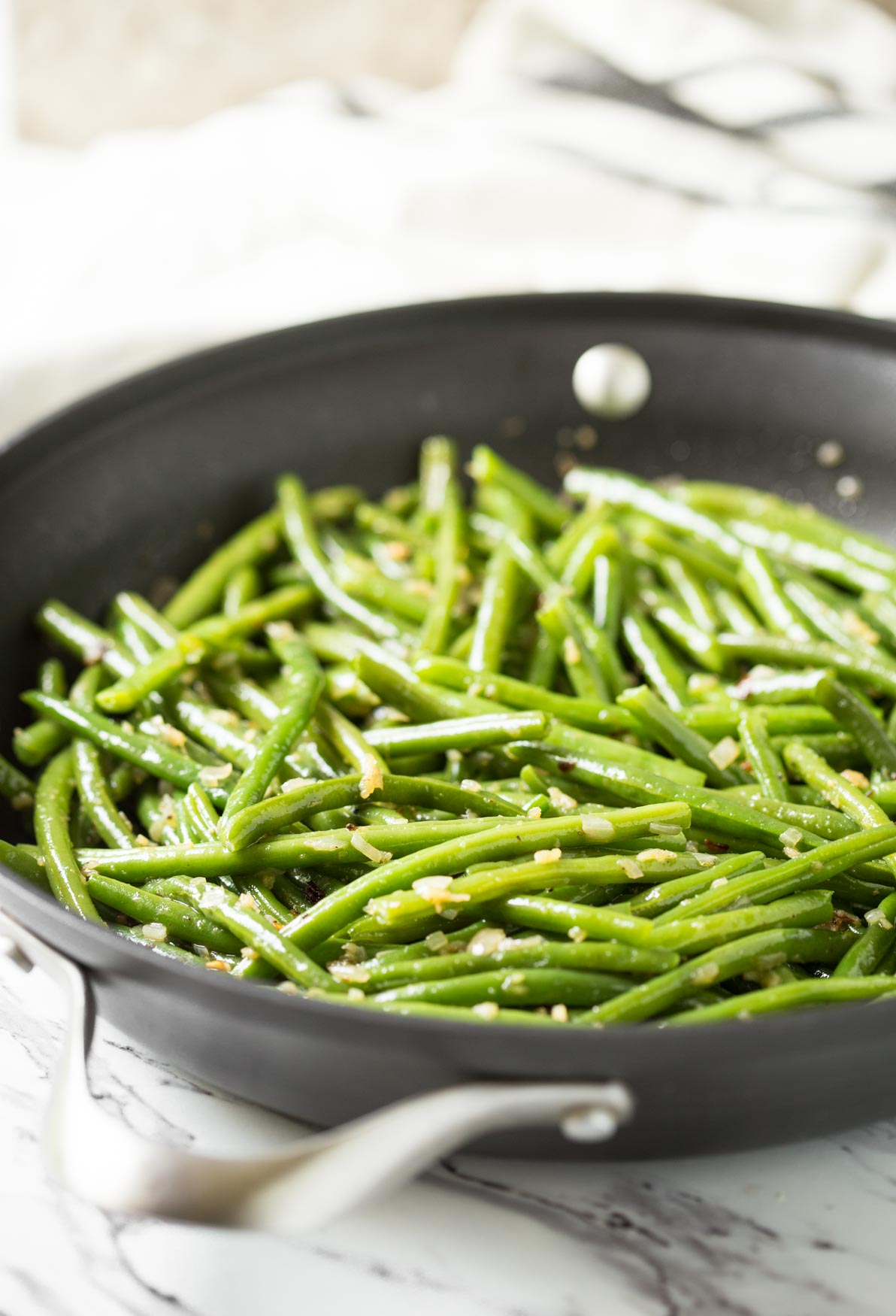
- Pick fresh green beans that are firm and about the size of a pencil for this recipe. Do not buy beans that are soft and bend easily instead of breaking in half. Using hands to cut the end of beans. If you can cut them without having to bend too much, the beans are fresh and not too old.
- You can steam or boil the green beans to your liking before adding garlic and oil to a pan. I steam them until they are tender in texture. You can keep them crunchy too.
- You can also add Parmesan cheese at the end of the cooking time to make it taste cheesy.
- When the dish is done, add a teaspoon of pumpkin oil and mix it in well. It adds a rich, nutty flavor to the food and makes it healthier. You don’t have to buy pumpkin oil just for this recipe if you don’t have it.
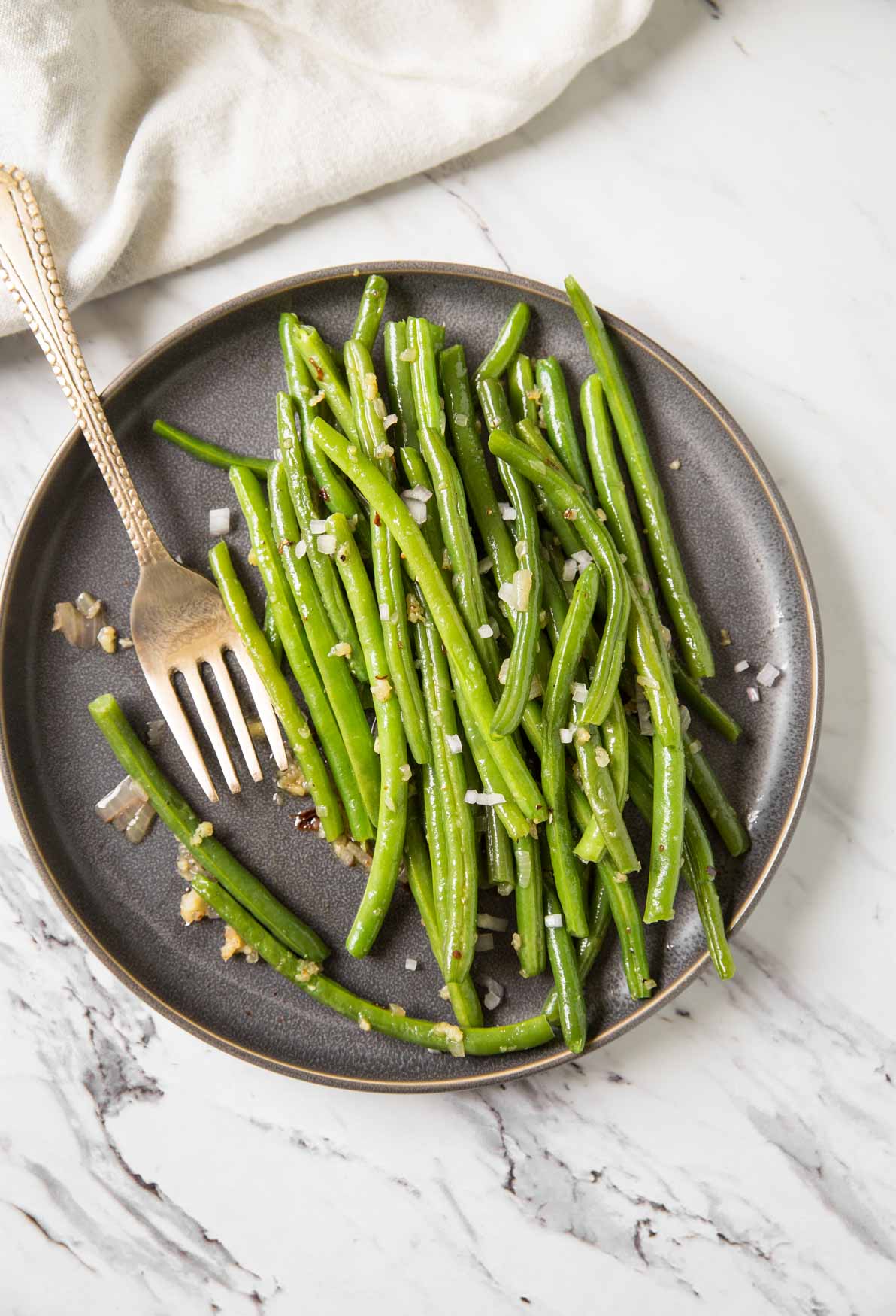
You will also love these one-pan recipes
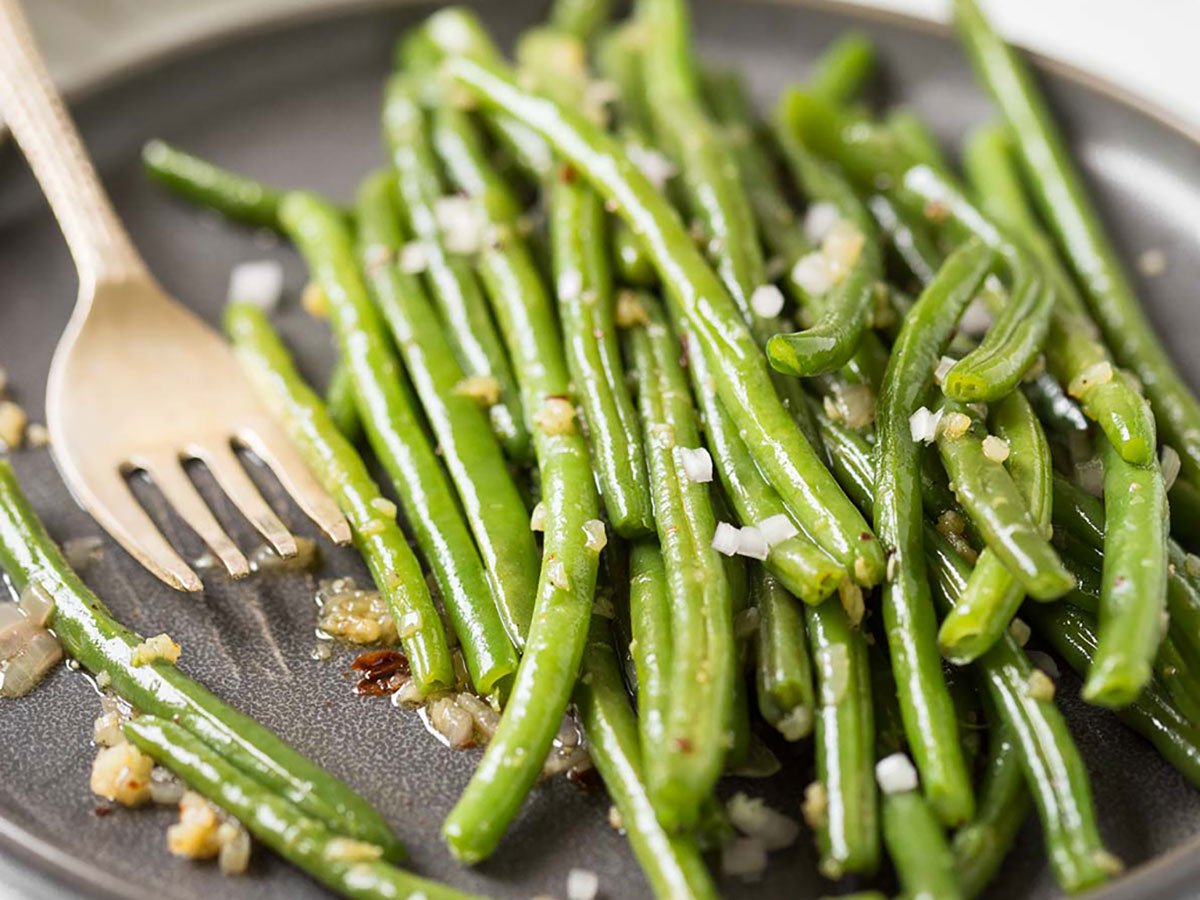
If you like this recipe, please rate it 5 stars in the column below. Thank You!.
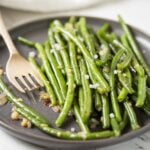
How to Cook Green Beans Like a Pro
FAQ
Are green beans healthier cooked or raw?
Is it healthier to steam or boil green beans?
How to cook green beans without losing nutrients?
Is there anything unhealthy about green beans?
